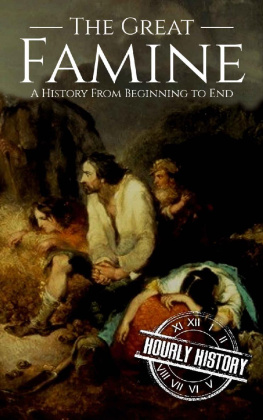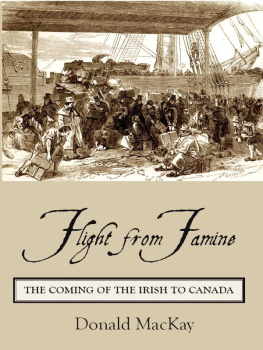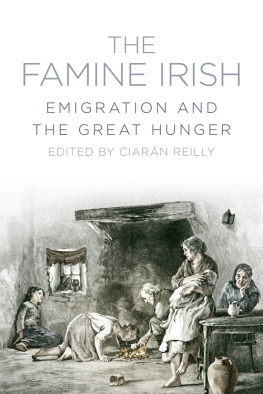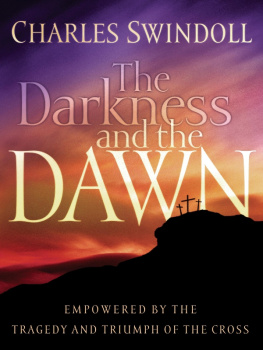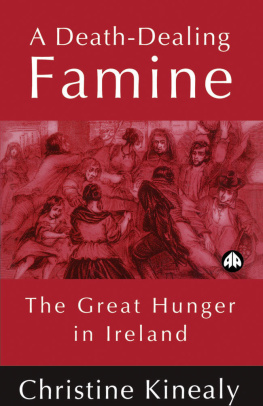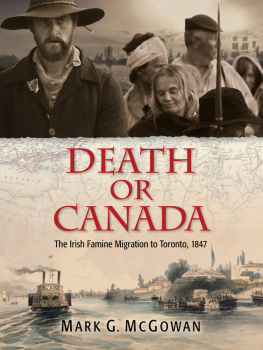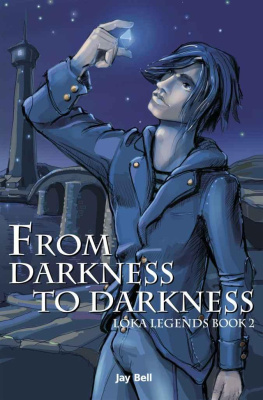Gillian OBrien
THE DARKNESS ECHOING
Exploring Irelands Places of Famine, Death and Rebellion

Contents
About the Author
Dr Gillian OBrien is Reader in Modern Irish History at Liverpool John Moores University. She is the author of Blood Runs Green: The Murder That Transfixed Gilded Age Chicago and a former Fulbright Scholar.
Also by Gillian OBrien
BLOOD RUNS GREEN:
The Murder That Transfixed Gilded Age Chicago
For Alistair Daniel and in memory of Mai Crowe
Welcome
Any true book on Ireland must be full of contradictions and thoughts that may be only half true
H. V. MORTON ,
In Search of Ireland
My grandmother always said shed make a handsome corpse. And when I saw her laid out on the bed, her hands neatly folded on her stomach, rosary beads entwined in her fingers, her soft leather shoes pointing to the ceiling, I knew she had been right. She was wearing the dress shed had made for her sons wedding: an elaborate, full-skirted creation in russet, gold and black on which abstract geometric patterns competed with swirling floral motifs it looked like a painting by Gustav Klimt. Her eyes were closed. The lamp on the bedside table threw an eerie glow across her pale face. I stood in the doorway, stunned. The clock on the bedside table marked time in languid ticks.
My grandmother opened one eye. Well? she said. What do you think?
Two nights earlier, over tea in front of the open fire, my grandmother had outlined her plans for her funeral. This was not the first time Id been receiving regular updates about this funeral for years. I knew her choice of undertaker, how she wanted to be waked and what prayers she had chosen for her memorial card. On this occasion she wanted to discuss her rig-out. Though far from rich, my grandmother had always been an extremely stylish woman, immaculately turned out in well-made clothes, and her funeral was to be no exception. Her plan, she told me, was to be laid out in the Klimt dress.
But Nana, I said, its twenty years old.
Nana did not see the problem.
Besides, I added, youre a much smaller woman now.
Nana waved a hand. Yerra, itll be fine. Shure Kirwans will sort all that out.
Kirwans were the undertakers she had chosen. I was not convinced that their seamstress assuming they had one would be quite as nimble-fingered as Nana believed, and it seems my opposition sowed the seeds of doubt. Two days later I arrived home from college to find her resplendently, if temporarily, dead.
Take a photo, she demanded. I want to see how I look.
Conversations with Nana about death were as ordinary as conversations about the weather. If you asked her how she was, she would invariably answer, Dying away, a process that though she was in perfect health seemed to overshadow the last forty years of her life. And if it wasnt her own death, it was other peoples. One day, when she returned from one of the innumerable funerals she attended, I asked her if her friend Mrs Burke had been there too. She replied, Arra, she was, barely. That woman would be dead years if shed the sense to stiffen. On another occasion I took her on a trip back to her home town in Clare. I sat in a sugn chair by the fireside eating Swiss roll and drinking cups of tea so strong, as Nana used to say, you could trot a mouse across them, and listened as she and her old schoolfriend Catherine recited a litany of illnesses, deaths and funerals in the parish. As Catherine paused after describing the most recent funeral Nana sighed and quietly murmured, Shure, the whole world is dead.
Nana was blithely unaware of her morbid nature. When Id point out that she was preoccupied by death (hers and other peoples) shed dismiss my observation with a shake of her head and a Yerra, no more than anyone else. And maybe that was the truth. As a nation, the Irish are obsessed with suffering and death. Where else would a website that publishes death notices get five million hits a month? Where else would a marriage proposal begin with Do you want to be buried with my people? or popular ballads extol the attractions of martyrdom? From birth, the Irish are buried alive in a never-ending avalanche of stories, ballads, plays, wakes, dirges, poems, paintings, ceremonies, museums and heritage sites that celebrate death, misery and the macabre. From the tribulations of Peig Sayers to the plays of Samuel Beckett, we are reared on tales of desolation, oppression, failed rebellions, famine, civil wars and emigration, with the occasional sporting victory to keep our spirits up. Perhaps nowhere else on earth is history so inextricably entwined with story a story of a very dark kind.
Stories about death have often been a source of levity and humour. Comic songs, plays and tales abound, from the ballad Finnegans Wake to Mirtn Cadhains Cr na Cille to Lisa McGees Derry Girls. Cr na Cille is set in a graveyard where the dead gossip and feud and worry about how well they looked as a corpse and how impressive their funeral was. An episode of Derry Girls has a funeral as its centrepiece, complete with a scene about the etiquette of wake sandwiches. And obsession with death isnt confined to the Irish on the island. Its an obsession that travels well. My friend Jan grew up in an Irish family in Liverpool, and in the late fifties, like many others, the family regularly headed back across the Irish Sea to the Red Island holiday camp in Skerries (my home town). At the end of their holiday they took part in the fancy-dress competition, where they created an elaborate funeral tableau entitled Finnegans Wake, which, as Jan described it, involved my big fat Grandad Billy as the corpse and my little dumpy Grandma Susie as the weeping widow.
It took a move to Liverpool, marriage to an Englishman and attendance at some English funerals to make me fully aware that the Irish fascination with the dark side of a story was not shared across the globe. In England, death is unmentionable. I remember being horrified when Al, my husband, told me that when his mother died not one of his friends went to her funeral and when he returned to university everyone behaved as if nothing had happened. Im still surprised by the formality of an English funeral, and after Id been to a few I announced to Al that if I died in England his first action was to ensure that I was repatriated to Ireland to be waked in traditional Irish style. What I didnt do was explain what that entailed. When my Uncle Sen died, Al and I went to his wake. We were welcomed at the door by my aunt and cousins and ushered into the sitting room, which was bustling with people. And there was my uncle, very much at the centre of things, just as he had been in life. This time, however, he was laid out in an open casket. I walked over and placed my hand on his cold one and gazed down. Its traditional at this point to observe how well a corpse looks, how they look just like themselves. I turned to make some such comment to Al, only to discover that he was no longer behind me. He was propping himself up against the door lintel and looking more than a little green. You never said that Sen would be here, he hissed when I crossed the room to retrieve him. It was true. It hadnt occurred to me to forewarn him that Sens body would not be tidied away in a funeral parlour overnight, but be at home. After all, it was his wake. He wouldnt have wanted to miss the craic.
But while we Irish pride ourselves on providing a good sendoff for the dead, we certainly dont have the most lavish death rituals that accolade is probably best reserved for the Torajans, who live on the Indonesian island of Sulawesi. There, dead relatives are mummified and kept at home for weeks, months, sometimes years. The dead remain an integral part of the family, often chatted to, and provided with food and drink, their bodies washed and their clothes changed regularly. Eventually, following an extensive feast involving the ritual slaughter of a buffalo, the body is placed in an ancestral tomb. By contrast, an Irish funeral might seem hasty, moribund and a little bit dull though my uncles was undoubtedly too exciting for Al.


